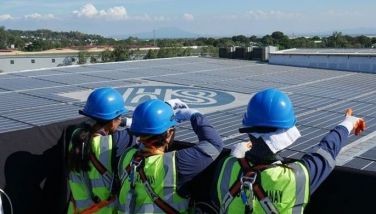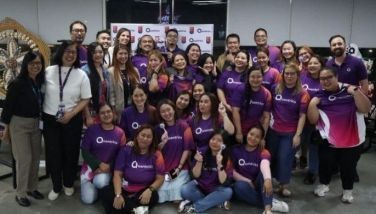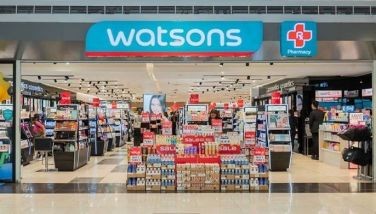Crisis intervention ordinance pushed
CEBU, Philippines - To address the lack of drug rehabilitation centers in the province, the president of the Philippine Councilors’ League (PCL) Cebu Chapter is pushing for the approval of an ordinance creating a crisis intervention program for surrenderers in Cebu.
The Provincial Board has referred the proposed measure to the committee on dangerous drugs use and prevention for further study.
Earl Tidy Oyas, Catmon municipal councilor, said it is the mandate of the government to formulate a special program intended for drug dependents who seek assistance from the local government units for their treatment or rehabilitation.
But the lack of rehabilitation centers in the province has been a challenge for the Capitol, with drug personalities who turned themselves in for profiling following the implementation of the police’s Oplan Tokhang already numbering over 50,000.
Oyas said PCL members and the Cebu Provincial Anti-drug Abuse Office have agreed to lobby for the passage of the ordinance so the government can focus on the rehabilitation of drug surrenderers.
He said all 51 towns and cities in the province need the program to help reform and uplift the lives of the drug personalities.
“So mao na nag-initiate ta ana para nay kapaingnan ang surrenderers. Kay sa pagkakaron mosurrender sila wala may mahitabo. Igo ra Tokhang ra human diha ra kutob way intervention,” he said.
If approved, the ordinance would require all local government units to establish an intervention program for drug users and pushers.
Oyas said all barangay and municipal health workers would be tapped and empowered to help in the rehabilitation of surrenderers.
The health workers, in particular, would be using standards established by the Dangerous Drugs Board, Department of Health, and recognized medical or psychiatric societies.
They would conduct profiling; assessment using simple screening instrument for substance abuse to determine the gravity of drug dependency or addiction, whether requiring out-patient or residential treatment or rehabilitation; psychological education; counseling; skills trainings; and alternative activities like socio-civic programs.
Oyas said the proposal would help address drug problem at the grassroots, aside from preparing the surrenderers for reintegration back to mainstream society with a positive outlook in life.
The Provincial Health Office and CPADAO have already been training government social workers and health professionals so that they can properly manage the “intervention” needed for drug surrenderers.
Both offices are also training barangay health workers, municipal health workers (MHWs) as well as personnel from the province’s 16 district and provincial hospitals on psycho-educational treatment and on life skills training.
Dr. Ismael Niño Pastor, Provincial Health Office chief on public health, said they have tapped all the barangay and municipal health workers throughout the province to help in assessing the drug surrenderers, to determine if one need rehabilitation and treatment.
He said actual intervention training for BHWs would focus on surrenderers with severe levels of addiction, because as frontline workers, they should be ready to do profiling and counseling.
Nurses and other medical personnel in district and provincial hospitals, on the other hand, are being trained to administer medical attention to surrenderers suffering from withdrawal symptoms or psychosis due to drug use.
Meanwhile, the Department of Social Welfare and Development said it already submitted a budget proposal for the operationalization and implementation of the “Reintegration, Rehabilitation and Transformation Support for Recovering Drug Dependents” or Pillar III of the National Drug Rehabilitation Program.
DSWD acted on instructions from Cabinet Secretary Leoncio Evasco to submit a budget proposal to the Department of Interior and Local Government for consolidation and to get approval from Budget Secretary Benjamin Diokno.
In a statement, DSWD said it asked for a P1.453 billion for use from October this year to December 2017.
The program’s target participants are 37,916 drug surrenderers for the months of October to December 2016 and 41,708 drug surrenderers from January to December 2017.
DSWD Secretary Judy M. Taguiwalo said that the program is in line with President Rodrigo Duterte’s call to eliminate illegal drugs in the country and to provide government-wide full support to recovering drug dependents.
"What we want is to help the drug users and pushers who have surrendered to rehabilitate themselves and return to the fold of society as productive members. Each of them have stories and personal histories that have led them to lives of drug-using or -peddling, and we hope that through the series of interventions our government agencies want to provide to them, we can help them leave this segment of their lives behind them,” Taguiwalo said.
She said the country's drug problem has to be addressed through interventions that go to the root causes, such as poverty caused by lack of social support for many Filipinos; corruption in various levels in various agencies of government; and lack of sustainable, productive employment for the poor.
"The three Pillars of this program for drug pushers/users are meant to pave the way towards lasting solutions to the drug problem,” Taguiwalo said.
Under the Pillar III, the government’s “Cash for Work” program, or the “Assistance to Communities in Need of the Protective Services, Assistance to Individuals in Crisis Situations and the Sustainable Livelihood Program,” is recommended for funding to provide assistance to recovering drug dependents, along with other psychosocial programs of DSWD and those of other agencies.
The budget requirement includes the staff requirement (lodged at the central office), 18 field offices, and 81 social welfare and development team offices starting this month until December next year.
Pillar I of the interventions has the Department of Health as lead agency along with the Philippine Drug Enforcement Agency, National Bureau of Investigation, Philippine National Police, Department of Interior and Local government, and the Dangerous Drugs Board in the creation of a database/profile of the surrenderers.
Screening and referral for appropriate services would include but not limited to drug testing; treatment and rehabilitation; mental health facility/medical center/hospital; and provision of support like education, skills training, job opportunities, psycho-social, medical, etcetera.
Pillar II is the Community Based Rehabilitation Pillar, which will be led by the Ugnayan ng Barangay at Simbahan along with line agencies such as the PNP, DSWD, Technical and Skills Development Authority, DILG, and DOH.
Pillar III, on the other hand, is “Aftercare, Reintegration and Transformation Support for Recovering Drug Dependents”, which will be led by the DSWD with help of the Bureau of Jail Management and Penology, Commission on Higher Education, Department of Agriculture, Department of Agrarian Reform, Department of Education, Department of Environment and Natural Resources , DILG, DOH, DOJ-Parole and Probation Administration, the Department of Trade and Industry, Department of Labor and Employment, TESDA, National Commission for Culture and the Arts, and the Philippine Sports Commission.
DSWD said these agencies will work together to provide a wide-array of aftercare services to recovering drug dependents to strengthen their rehabilitation and reintegration. (FREEMAN)
- Latest


























